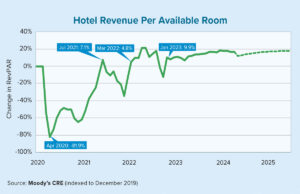One of the original 13 colonies, Pennsylvania is split between two regions that are dominated by the state’s largest cities: Philadelphia lies on the East Coast, while Pittsburgh is in the Rust Belt of the Midwest. Overall, Pennsylvania gained roughly 16,000 people in 2018, according to U.S. Census data, but the growth came primarily in the eastern half of the state due to an influx of immigrants and young people.
The Keystone State’s western counties continued a decades-long trend of population loss last year, although the decline was not as deep as it was in the 1970s and 1980s when the state’s steel and manufacturing industry waned. Pittsburgh ranks high on lists of best places to live, due to its quality of life and affordable home prices. The city has seen strong economic growth in recent years, fueled by a tech boom and world-class universities.
U.S News & World Report this year ranked Pennsylvania No. 41 on its “Best States” list, placing it near the bottom in all categories, with the exception of health care (No. 21) and opportunity (No. 13). The publication noted the state’s below-average job growth as one reason for its low national ranking. Pennsylvania’s real gross domestic product grew by 2.1% in 2018, the same growth as New York and trailing only Massachusetts (2.7%) and New Hampshire (2.2%) in the Northeast region, according to the U.S. Bureau of Economic Analysis.
Although iron and steel production has fallen from its heyday, Pennsylvania’s steel industry still directly employs 34,124 workers who earn an average annual salary of $92,037, according to a 2018 study for the American Iron and Steel Institute. Pennsylvania ranks No. 3 among steel-producing states in terms of direct jobs, output, wages and federal and state taxes paid. Several Fortune 500 companies are headquartered in Pennsylvania, including pharmaceutical wholesaler AmerisourceBergen, telecommunications company Comcast and national pharmacy chain Rite Aid.
Pennsylvania’s largest metro area is Philadelphia. Its bustling downtown economy is driven by professional, business and financial services, as well as real estate and technology companies, which account for 121,300 jobs, or 40% of employment in downtown Philly, the Center City District (CCD) reported.
Comcast recently completed a 1.8-million-square-foot technology center and service company Aramark added a 600,000-square-foot expansion, pushing total downtown office inventory to 43.5 million square feet, according to CCD. Philadelphia still has 21% fewer jobs than in 1970, however, and was down nearly 23,000 jobs from its 1990 level, CCD reported.
Philadelphia office market
Focus: Mining
Unemployment
What the locals say
3 Cities to Watch
Philadelphia
Pittsburgh
Gettysburg
Philadelphia’s central and noncentral business districts contain roughly 62.5 million square feet of office space spanning less than five square miles. As of the past first quarter, the office vacancy rate in the so-called Center City district of Philadelphia was just below 8%, which ticked up slightly year over year, commercial real estate services company Avison Young reported.
Rents rose 4.4% year over year in the first quarter of this year to a new high of $35.77 per square foot. The central business district (CBD) includes 184 office buildings encompassing more than 54 million square feet. CBD asking rents have been rising, but the area experienced negative net absorption of 272,000 square feet in first-quarter 2019.
Avison Young said that a limited amount of available space and little new construction has made it challenging to find tenants for Class A space. The company was projecting a strong second-quarter 2019 for the Center City and suburban markets, with gradually declining vacancies and rising rental rates.
Bituminous coal has been mined in Pennsylvania since the late 1700s and today the state remains a major coal producer. Bituminous coal mining is active in 21 counties in the southwest region of the state, with the largest sites in Clearfield, Somerset and Indiana counties.
Nationally, Pennsylvania is the third-largest coal producer after Wyoming and West Virginia, according to the U.S. Energy Information Administration (EIA). Anthracite coal, or so-called hard coal, also is mined in six Pennsylvania counties, with the majority of the mines in the northeast portion of the state. As of 2017, the coal industry accounted for about 5,500 underground and surface mining jobs in Pennsylvania, EIA reported.
In 2017, the state produced more than 49 million tons of coal, according to EIA. The majority of it was used to produce energy.
Pennsylvania’s unemployment rate has tracked fairly closely with the U.S. average for several years. The unemployment rate topped out at 8.8% in 2010 during the Great Recession, according to the U.S. Bureau of Labor Statistics. As of this past May, the state’s unemployment rate stood at 3.8%, some 20 basis points higher than the national average.
Workers in the Philadelphia metro area had a mean hourly wage of $27.01 in May 2018, 8% higher than the national average of $24.98, according to labor statistics. Statewide, the annual mean wage in May 2018 was $50,030, which was below the U.S. mean of $51,960.
Labor statistics showed that workers in the 11-county Philadelphia metro area had an average weekly wage of $1,236 as of fourth-quarter 2018, above the national rate of $1,144. In Pittsburgh’s six-county metro area, the average weekly wage was $1,119 in the past fourth quarter.
“The Philadelphia market has been very strong in the commercial [real estate] realm. We’re continuously seeing prices go up, and cap rates continue to be compressed. Honestly, there’s really not much inventory right now because it’s in such high demand. There are so many deals that are going off market. They start to get whispered about and then, all of a sudden, they’re under contract and locked up. In the Lehigh Valley region where I am, we’re about an hour and a half drive from New York City. So, we see a lot of operators from New York City and from Philly that come into the valley, mainly because of [the high asset] prices and a lack of inventory in the primary cities.” Nathan Trunfio, president, DLP Direct Lending Partners.
The City of Brotherly Love is the second-largest city on the East Coast with a population of 1.58 million and a metro-area population of more than 6 million. Philadelphia’s downtown, known as Center City, comprises 233 blocks and more than 1,500 properties, and is the second-most populated downtown district in the U.S. after Midtown Manhattan. Center City holds 42% of the city’s jobs. A total of 13 rail lines, three rapid-transit lines, five trolley lines and 29 bus routes ferry roughly 300,000 people into the downtown area each weekday.
The state’s second-largest city has 302,000 residents and a metro-area population of about 2.4 million, according to the World Population Review. Formerly the epicenter of the U.S. steel industry, Pittsburgh has undergone a technology boom. Intel, Microsoft, Google, Facebook and Amazon, among several other companies, have opened offices in Pittsburgh and are drawing from the engineering talent produced by the likes of Carnegie Mellon University and the University of Pittsburgh. Pittsburgh also frequently scores high among the most-livable American cities and was ranked No. 2 last year by The Economist.
The site of the bloodiest battle of the Civil War is a borough and town in south-central Pennsylvania. Gettysburg had a population of about 7,600 residents in 2017, but millions of visitors come each year to the Gettysburg National Military Park. The center of town also contains several historical landmarks, including the David Wills House, where President Abraham Lincoln stayed the day before he delivered the Gettysburg Address.
Sources: American Iron and Steel Institute, Avison Young, Center City District, National Park Service, Pittsburgh Post-Gazette, U.S. Bureau of Economic Analysis, U.S. Bureau of Labor Statistics, U.S. Census Bureau, U.S. Energy Information Administration, U.S. News & World Report, WHYY, World Population Review
Author
-

Victor Whitman is a contributing writer for Scotsman Guide and a former editor of the publication’s commercial magazine.
View all posts






